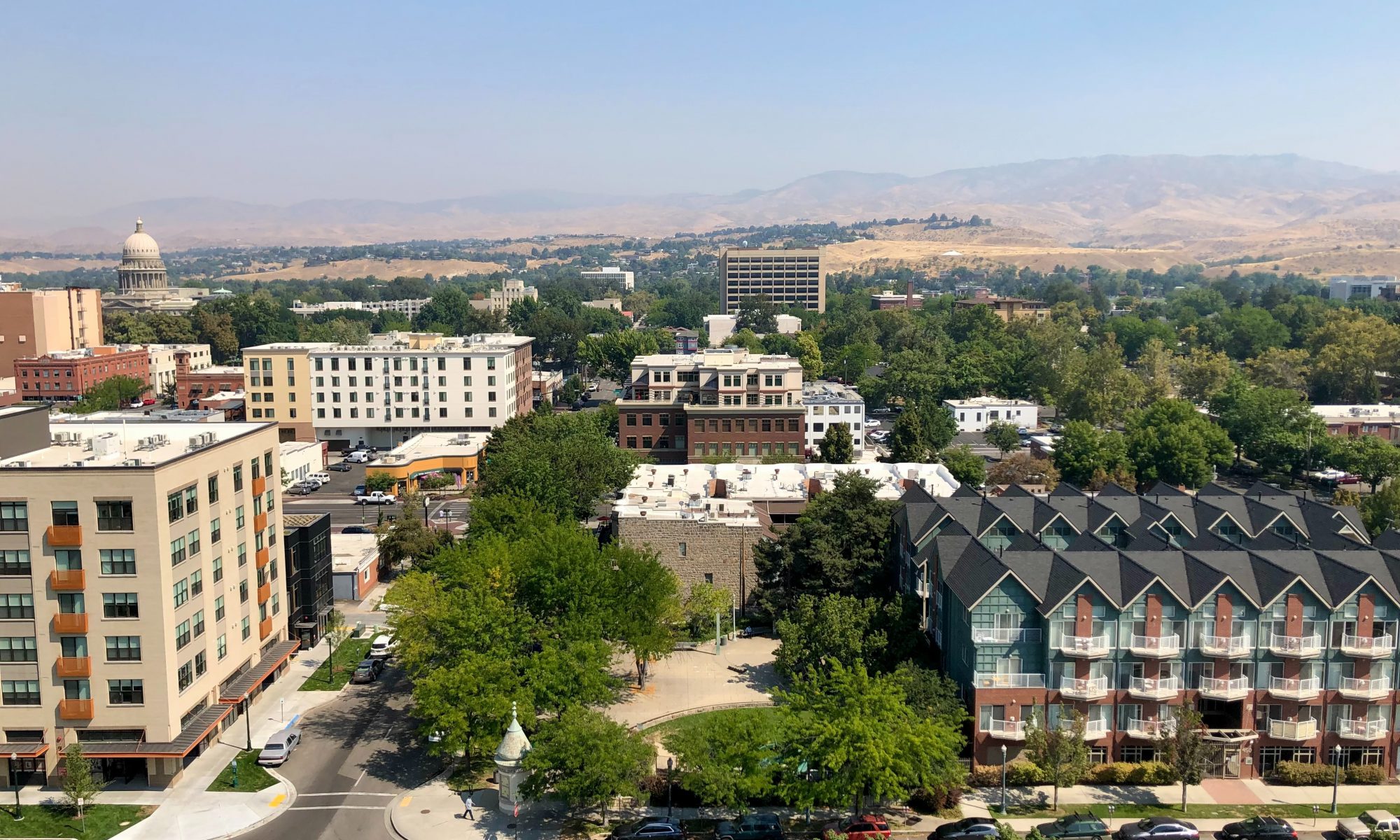The 1031 Exchange was introduced to the Internal Revenue Code of the United States in 1921, to stimulate business and economic growth by providing relief to taxpayers through a deferral strategy. In the hands of a savvy and experienced investor, the 1031 Exchange is an excellent way to increase one’s buying power, expand one’s portfolio, and build wealth. Section 1031 of the U.S. tax code is, however, a complex labyrinth of rules and regulations. 1031 exchanges are governed by strict IRS guidelines and can be quite complicated. This Q&A is intended to address some of the questions frequently asked by CRE professionals.
What is a 1031 exchange and how can I leverage it to my benefit?
If commercial real estate investors were required to pay tax every time they sold a property, it would limit transaction volumes, force longer hold periods, and restrict their ability to respond to – and capitalize on – changing industry and market dynamics. The 1031 exchange was designed to address these limitations by making it possible for an investor to buy and sell – or “exchange” – one commercial property for another, while deferring the capital gains tax payable on it. To qualify, the equity needs to be reinvested into a new property of equal or greater value. A 1031 exchange provides the flexibility to buy and sell more frequently, reinvest in more productive property, offload underperforming assets, and respond quickly to opportunities within the market. It is also an excellent depreciation reset tool.
What are the basic rules of the game?
To qualify for a 1031 exchange, the transaction must meet the following criteria:
- Both relinquished and replacement properties must be bought and sold by the same individual taxpayer or corporate entity. The only exception is a single-member LLC.Both properties must be held for investment or business purposes only.
- Both properties must be in the United States.The properties bought and sold must be “like-kind”. Most real estate assets qualify, but property purchased for personal use is generally excluded.
- All proceeds from the relinquished property must be used when purchasing the replacement property. The replacement property must be of equal or greater value to the relinquished property: If the value is lower, surplus funds – sometimes called a “cash boot” – will be subject to capital gains tax.
- A qualified intermediary needs to be commissioned to complete the exchange.Proceeds from the sale will be held in escrow by the intermediary and used to purchase the new property.
- The property title holding cannot be altered or dissolved during the exchange process.
- The replacement property must be identified within 45 days and purchased within 180 days of the sale of the relinquished property. Under the “200 percent” rule, you may identify any number of replacement properties as long as their combined value does not exceed 200% of the value of the relinquished property. Under the “95 percent rule” you may identify any number of replacement properties, but you must close on all of them.
What assets do, and don’t qualify for a 1031 exchange?
Assets bought and sold in a 1031 exchange must be considered “like-kind” – a misleading phrase that doesn’t quite mean what it implies in that properties do not need to be of the same size, composition, grade, or even asset class. You can exchange an office park for raw land for example, or a ranch for a strip mall. “Like-kind” refers more to the value of the property, than its nature and usage. The replacement property must simply be of an equal or higher value and purchased for investment or business purposes.
All forms of property can be exchanged, including raw land, multi- and single-family rentals, retail centers, office buildings, warehouses, industrial facilities, self-storage etc. REITs and other securities do not qualify for 1031 exchanges. Exchanges of former principal residences and vacation homes may be permitted under certain circumstances, and within strict guidelines.
What steps do I need to take, and within what timeframes, to complete the exchange process?
In a typical delayed 1031 exchange, the following steps and timelines apply:
- List your property for sale.
- Appoint a qualified intermediary – one who is reputable, credible, and experienced – as they will play an important role in the exchange process. When the property sells, proceeds are transferred to the intermediary who holds them until the replacement property has been purchased. It is advisable to start your search for a replacement property as soon as possible; you only have 45 days to do so.It is common practice to identify 3 potential replacement properties unless you plan to invoke either the 95% or 200% rules.
- Identify your replacement property and designate this in writing to your intermediary.
- Conclude the purchase within 180 days of the sale of your relinquished property. (Note: the two time periods run concurrently, which means that you start counting on the closure of the sale, not the identification of a replacement property).
The 1031 process ends when both the sale and the purchase have been concluded. In a simultaneous exchange, the sale of the original and replacement property must close on the same day.In a 1031 exchange, timing is critical.
How long do I have to hold an exchanged property, and are there any limits on how many exchanges I can do at any given time?
For an exchange between related parties, properties must be held for at least 24 months; there is no prescribed length of time in an arm’s-length exchange providing that the property has been acquired for business or investment. There are no limitations on how many times a 1031
Exchange can be entered into, providing that the investor has the necessary means to do so.
What alternatives, if any, are there to the “like-kind” exchange rule?
While the traditional delayed ’like-kind’ 1031 exchange is the most widely used, there are a number of alternatives that offer tax deferment benefits:
- A Reverse 1031 exchange allows for the replacement property to be purchased before the relinquished property is sold, providing that the investor has the necessary funds to complete the purchase. To qualify, you must transfer the new property to a qualified intermediary, identify a property for exchange within 45 days, and then complete the transaction within 180 days after the replacement property was bought.
- A Partial 1031 exchange does not require all the proceeds from the sale of the relinquished property to be spent on the replacement one. The investor will, however, be required to pay capital gains tax on the reserved cash or cash boot.In an Improvement 1031 exchange, the replacement property can be purchased for less than the sale price of the relinquished property, providing that the remaining funds are used to make improvements to the property.
The advantage of this exchange is that investors are not limited to existing opportunities; their exchange can fund the development of vacant land, reinvigorate derelict buildings, or build new residential communities.
Can I take cash out of a 1031 exchange?
The main purpose – and benefit – of a like-kind exchange, is to defer tax by trading “up or equal” in value, ensuring that there is no net debt relief. That said, there can be compelling reasons for wishing to generate cash from the transaction. A partial exchange is the most common means of doing so, but you will be liable for capital gains, depreciation recapture and other taxes. Two further options exist: either by refinancing the relinquished property prior to closing, or the replacement property after closing: In the case of the former, an investor with high equity and low debt, may wish to finance or refinance the property, thereby pulling cash out, and closing with higher debt and lower cash equity. In this scenario, the investor essentially walks away with debt on the property paid off, cash in his pocket, higher debt and lower equity in his replacement property, and total tax deferral.
To be clear: this is not a practice generally condoned by the IRS, but one could perhaps argue that if refinancing was done well in advance of the exchange, and not in anticipation of it, or if it was done for reasons other than to swap debt for equity – to mitigate cash flow problems or fund repairs or refurbishments, for example – then the investor should be able to refinance without fear of reprisal.
The second option is to refinance the replacement property after closing, and this is perfectly permissible given that the investor’s position is no different to that of anyone else owning and paying off a property.
Is the 1031 Exchange living on borrowed time?
Yes. And no. We can take some comfort from the fact that a total elimination of the 1031 exchange doesn’t appear to be on the cards. On the other hand, the proposed amendments and imposition of a $ 500,000 tax deferral cap, will definitely negatively impact commercial real estate trading, going forward.According to a study by Ernst & Young, “President Biden’s proposal will not only severely limit the property values that investors can use in an exchange, but also adversely impact the overall economy. While this proposal is intended to generate $1.95 billion in revenue for the government through taxing the sale of real estate, many people don’t realize that taxes paid and related to businesses using like-kind exchanges were already projected to produce $7.8 billion for the IRS last year”.
There are many compelling reasons to leave the 1031 exchange just as it is – and many supporters lobbying congress – so we should remain hopeful that common sense will prevail. That said, you’d be well advised to prepare for some tightening of federal tax regulations in the coming months along with further restrictions on deferral thresholds. Stay vigilant, monitor any potential reforms closely, and start considering some alternatives – like qualified opportunity zone funds, tenants-in common cash-outs, direct purchases of triple-net (NNN) properties, and Delaware statutory trusts – all of which offer tax deferral opportunities.









